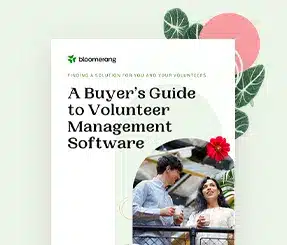Grant Success Isn’t Guaranteed—Even With a Great Proposal


Full Platform Overview Chat With Us



Full Platform Overview Chat With Us




Too often, nonprofit leaders view a grant as a guaranteed win when everything seems to align. But seasoned grant writers know better. This blog breaks down what’s in our control, what’s not, and how to communicate the unpredictability of grants with confidence and clarity.
“Our mission perfectly aligns with the funder’s priorities, the program officer invited a proposal, our program is rock solid, and we have an amazing grant writer in place. This grant is a sure thing!”
How many grant writers have heard this, or a variation of this, from well-meaning leaders new to grants and eager for what they see as easy money?
As grant writers, we know it’s not that simple. When approaching any new funder, it’s imperative to acknowledge that a wide array of factors can significantly impact the success of each proposal, particularly now, when philanthropy is experiencing significant disruption and change. These include factors we can control, factors we cannot control but may influence, and factors outside our control.
When it comes to crafting competitive proposals, some factors are within our control—and by focusing on them, we can better position our nonprofit to secure funding and sustain its programs. These factors include:
As grant writers, part of our role is to speak up when we notice issues that—though possibly outside our control—could be addressed to improve the organization’s chances of securing funding. These include:
It’s easy to feel overwhelmed by the grant writing factors beyond our control but acknowledging them is essential to fully understanding what influences funding decisions. To help process and communicate these realities, this non-exhaustive list is grouped into common themes:
Funder limitations
Shifting conditions & priorities
Human factors & internal politics
While it’s tempting to believe a strong program, aligned mission, and polished proposal guarantee funding, experienced grant writers know better. The grant landscape is complex, influenced by many variables well beyond our control. That’s why it’s essential to focus on what can be controlled: strategic alignment, quality writing, complete supporting documentation, and timely submission. By channeling energy into these factors, we maximize our chances for success—even when the final decision lies elsewhere. This mindset not only grounds our work in realism but empowers us to show up with excellence, regardless of the outcome.
As grant professionals, we also have a responsibility to educate colleagues and leadership about the many elements that impact funding decisions—well beyond the quality of the proposal itself. Too often, grants are perceived as easy money or a guaranteed revenue stream, especially when a funder expresses interest or there is strong programmatic alignment. It’s up to us to bring clarity and context, helping internal stakeholders understand the nuances of funder decision-making, the unpredictable nature of grant cycles, and the external factors that can derail even the strongest application. By doing so, we not only manage expectations but also build a culture that values strategic planning, continuous improvement, and resilience in the face of uncertainty.
One of the most important roles grant writers play is helping colleagues and leadership understand the unpredictable nature of the grant landscape. These tips offer practical ways to communicate uncertainty while reinforcing a strategic and proactive mindset.
Grants can be powerful tools for funding impact—but only when approached strategically, realistically, and with a long-game mindset. By focusing on what’s within our control and helping others understand the full picture, we build not just better proposals, but stronger, more resilient organizations.

Ready to craft your fundraising plan?

Comments